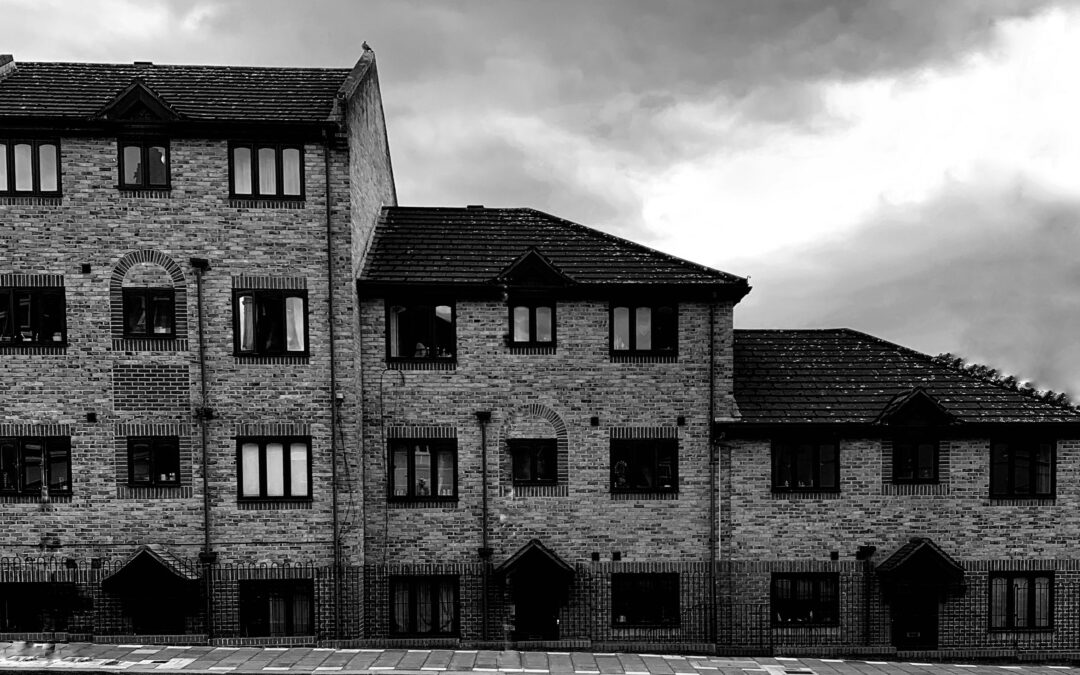This post explores: How historical buildings often inspire admiration for their grandeur and craftsmanship, modern construction surpasses them in safety, efficiency, sustainability, and affordability, balancing aspirations with contemporary political, socioeconomic, and technological realities.
Thank Goodness We Don’t Build The Like We Used to
Growing up I would often hear the phrase “they don’t build them like they used to.” The saying implies that older buildings are better than new buildings. Better design, better construction, better detailing, better workmanship—just better.
I bought into this thinking until I began my professional career. It was then that I learned through first-hand experience exactly how old buildings were put together. Needless to say, my understanding of that old adage has evolved. I can tell you with 100% certainty that we certainly do NOT build them like they used to—and thank goodness.
Now, I am sure some of you will take issue with that statement. But, before you rush to judgement, let me explain my position.
Royalty & Religious Leadership Drove Early Building
The production of iconic historical buildings was driven by royal and religious leadership for the purpose of creating enduring images of control, power and persuasion. Social structures were significantly shaped by these buildings. Vast social resources were leveraged to organize the materials, energy and workforce required to implement these massive projects. Today, many of us travel across the globe to visit these architectural wonders. The Pyramids, Machu Picchu, Versaille and the Great Wall of China are all inspirational in their sheer scale and the grandeur of their vision. But the vision that we behold typically does not reflect the financial and political hardships imposed on the society in order to create these monuments.
When people compare historical buildings to those of the present day, they often compare apples to oranges. For instance, they will marvel at Versaille—which, by the way, is gorgeous—then compare it unfavorably to their own home, typically a middle class residence. The former was built by enslaving the nation’s workers and using up a quarter of its gross national product over the course of more than a century; the latter was built on a budget by a single builder/developer and put out to market in 12-18 months at a reasonable price.
Details, Cost & Value
In general the attention to detail in historical “high-end, iconic” buildings (e.g., wood trim, stonework, painting, decoration…….. ) was of extraordinary high quality—a quality of detail and material rarely seen in modern construction. I would argue, that in almost all cases this has little to do with the capability of the modern workforce to execute these types of design. Rather, due to the fact that we strive to:
- Pay good wages to our workers
- Increasingly use materials in a more effective and sustainable fashions
- Complete building projects in months or years, not decades or centuries
- Constrain costs within modern political and socioeconomic tolerances.
Perhaps a better comparison is between the typical residence of today and its historical counterpart. Throughout most of history, vernacular buildings have been poorly constructed and built without general design and safety guidelines—regulatory standards being a relatively recent phenomenon. Building processes were not monitored. Maintenance was on a crisis-only schedule. By today’s standards, almost all buildings of this type posed significant dangers to human health. Fire, cold, heat, water leakage, mold, mildew, structural deficiencies, decay, bad lighting, and insufficient ventilation highlight a long list of challenges that faced almost all historical buildings.
Now, when it comes to structural, mechanical, electrical, plumbing, fire prevention and a growing list of current specialties in security, technology, communications, building automation……..etc. The historical building program cannot compete with today’s version.
The Importance of Project Stakeholders
Buildings of all types have aspirational components driven by the resources and will of the project champion. In the case of a peasant’s cottage, the aspiration may have been colorful window treatments made from saved fabric. In the case of the Great Wall of China, the aspiration was to make the scale and scope so awe-inspiring that the sheer immensity of the work imposed subservience to the sovereign’s will (for both citizens and enemies of the state). Two completely different aspirations, both in cost and scale, but still driven by the functional, pragmatic capabilities of the project stakeholders.
Whether in the past or the present, most building projects result from a balance between aspiration and the limitations of political, socioeconomic, and technological reality.
I have worked on numerous historical projects over the course of my career. These projects are interesting and fulfilling. However, taking care of old buildings is expensive and time-consuming. A balance needs to be achieved between devoting today’s resources to maintaining artifacts from our cultural history and ensuring that the urgent needs of today and tomorrow are effectively met.
Balancing the Needs of the Past & the Future
Trying to maintain aging systems and infrastructure while concurrently planning for the future is a problem that extends far beyond the world of building. Even if our political types at local, state and federal levels were always making smart decisions—which, regardless of political persuasion, we all know is NOT happening—balancing the demands of past and future is very challenging.
In the building world, we possess the knowledge, resources, skillsets and people to achieve this balance. Historical structures that provide cultural value to our modern communities through their stories, systems and spaces can and should be updated if the cost remains consistent with building new. However, if the stress placed on today’s communities by trying to maintain or re-develop historical structures is too great, then we must submit to the natural order of things. We may learn from the past and keep it alive in our collective memories and systems of knowledge even as we let the stone structures pass away.
